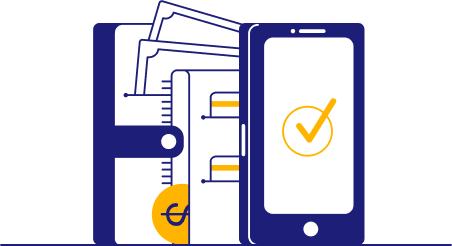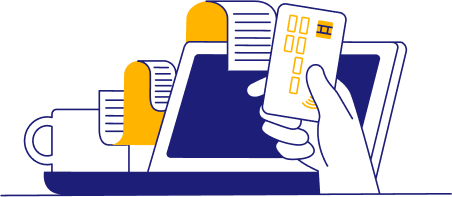I know what you’re thinking. “That title has to be a typo. No one could grow that fast!” I’m here to tell you that if you work hard and pursue your dreams, you, too, can make $10 in two years.
My twin brother and I quit our well-paying jobs in April 2018 to build a software business that could replace our incomes. Oh, Stephen, from 2018, you were so naive, and your bank account was so much fuller.
Finally, after more than two years, we made our first revenue from the software we created. I can safely say I’ve never felt happier getting $10. Our journey to get to this point has been sprawling, so I hope giving insight into our mistakes can help you skip two years of painful lessons we learned.
Stage 1: We Have No Idea What We’re Doing

Revenue: $0
Dates: April 2018-December 2018
Lesson: Don’t quit your job too early.
I was at a loss. I listened to podcasts about bootstrapping from successful founders. I read the blog posts (the irony of me writing this in a blog post is not lost on me). I read The Lean Startup. Why was I at such a loss?
When we started BeamJobs (at the time our name was qualifIQ—I think it’s obvious why we changed it), we wanted to build a product in the hiring space. We weren’t experts in hiring; all we knew was our experience looking for new jobs in data and engineering was really unpleasant.
We had ideas of products we could build to solve some of the issues we experienced. We just had no idea how to go about seeing if any of those ideas were viable. Believe it or not, a general feeling of unpleasantness did not immediately lead to product innovation.
I knew from my obsession with consuming startup literature and podcasts that I needed to talk to potential customers. So I did. I would reach out to anyone based in NYC with “hiring” in their title and ask if they wanted to grab coffee. To my surprise, my calendar started filling up with these meetings.
(As a side note, people are generally very kind. At each stage of our journey, people have been more than willing to take time out of their day to talk and meet with us.)
I completely missed the mark with these meetings. I would travel anywhere in NYC at any time of day to meet with people. The problem is, I didn’t have any specific questions I wanted to ask or ideas I wanted to validate. I wanted to learn about their problems in hiring, but instead, since I had no idea how to guide a conversation, we’d wind up just shooting the shit for an hour or two.
I convinced myself I was making progress since my calendar was packed with meetings, but I got nothing out of them. This perfectly encapsulates how I felt for the first eight months of our business.
My entire life up to this point I’d had guard rails. I went to school, graduated, got a job, got another job. Since I was a child until I was 26, I knew what I was going to do next week, next month, and next year.
It hit me in the face like a bowling ball; the chasm between reading & doing when it comes to starting a business is miles wide.
When I quit my job in April 2018, for the first time in my life, I was in total control. On day one of working full-time on BeamJobs, I was filled with anxiety. It hit me in the face like a bowling ball that the chasm between reading and doing when it comes to starting a business is miles wide.
If I could go back in time, I would have come up with concrete product ideas I wanted to validate while I still had a job. I then would have come up with explicit metrics for determining what validation meant (if I had 5 to 10 paying customers); only then would we have built a product and gone all-in.
I’m a big risk-taker. But there’s a difference between smart risk and risk for risk’s sake. Don’t quit your job just because you want to start a business. Quit your job because you want to start a business that has some demonstrable sign of potential for success.
Stage 2: Do the Thing That Makes Money

Revenue: $109,000
Dates: December 2018-November 2019
Lesson: Learn the industry you want to operate in before coding.
Finally, after bumbling around for seven months, I started to get somewhere with my conversations with hiring managers. I honed in on the biggest problem they had time and time again when hiring technical talent: finding qualified people interested in applying for their roles.
In other words, recruiting. Now, my brother was an engineer at Google. He was very familiar with cold messages from recruiters, and let’s just say they generally were horrible:
- Incorrect terminology (do you Java?!)
- Getting his basic information wrong
- Not mentioning salary
- Sending 15 follow-ups even after he requested they stop (this is real and, frankly, I’m just impressed the recruiter was still able to land in his inbox)
When talking with other engineers, it seemed that third-party recruiters were nearly universally loathed. So this was going to be our product. We’d build technology to make it easier for engineers to find new jobs. This, in turn, would also make it easier for companies to hire engineers.
But, we still didn’t know much about recruiting and how it worked. We learned from the first stage of operating our business that before we built a product, we needed to know exactly what we were going to build. We had previously spent too much time and effort building software that didn’t solve a problem that no one was interested in.
So, we decided to operate as a traditional recruiting agency with our differentiator being that we had actually done the jobs we would help companies hire for. We got all our business through cold emailing. We’d find companies hiring for roles we felt comfortable filling and write custom cold messages about how we could help them (we name-dropped Google A LOT).
Over time, this started to work. We signed contracts with companies under which we would get paid if they hired an engineer or data scientist we sent to them. All in all, we were able to generate $109,000 in revenue in 2019.
While all signs were pointing up revenue-wise, there was one problem. We were completely miserable. We hadn’t built new technology to solve the problem we set out to solve. Instead, we were using the same cold messages other recruiting agencies were using with more salary transparency and a better understanding of the roles we were filling.
Spending two hours sending these messages felt like 20 hours of work. It was soul-draining. This was compounded by the fact that companies don’t generally treat recruiting agencies very well (with some notable exceptions). Since we operated under a contingency model, companies had no incentive to respond to our emails or treat the candidates we sent well.
In fact, they were strongly disincentivized to do so since recruiting fees are so high (15 to 25 percent of a candidate’s base salary is standard). We’re not opposed to hard work, but we quickly realized we had quit our jobs to take a huge pay cut, and we hadn’t taken meaningful strides toward solving the problem of helping people find and land new jobs.
Although we generated $109,000 in revenue, every day was an uphill battle with the recruiting agency. There was no momentum or scalability. Once we placed a candidate at a company, we had to find a new company to sign a contract with. It was a never-ending hamster wheel that we just didn’t want to keep running on.
Stage 3: People Are Using Our Free Tool!

Revenue: $0
Dates: December 2019-March 2020
Lesson: You need a viable business model. Free growth only “works” For VC-backed companies.
At this point, we took a step back and evaluated where we were. We wanted to build software to make the process of getting a new job easier for job applicants. We knew we couldn’t operate as a recruiting agency and build a software product simultaneously, so we went all-in on the software product.
We knew the biggest problem that technical people we talked to had when looking for a new job was finding jobs that actually matched what they were interested in.
Job boards showed the same jobs over and over, and we knew from our experience, there was a whole other world of companies that didn’t post on job boards but were still hiring. So, we spent a few months building a tool that would index these jobs directly from company career sites. Seventy percent of the jobs we found weren’t posted on major job boards.
More than that, we were able to match technical people with jobs they loved based on preferences like tech stack, social mission, etc. It was really cool! It was free, and we quickly grew to over 300 people receiving our customized job recommendations each month. The best part was that we were genuinely helping people get new jobs, and the feedback was overwhelmingly positive.
There were two downsides to this product, however. While my brother built some really amazing tech that, based on user preferences, could narrow a list of thousands of jobs down to five, there was still a lot of manual work involved in sending our curated recommendations to each person. We were each spending 20 to 30 hours each week putting together recommendations for each person that signed up. For free.
We were each spending 20 to 30 hours each week putting together recommendations for each person that signed up. For free.
Our hope was that we could reach a critical mass of people getting our recommendations, and then companies would pay us to reach those candidates with their job openings. Unfortunately, to get enough people with a specific skill set in a specific location with a specific number of years of experience is really expensive and takes a long time (years, not weeks). Our time horizon to make meaningful revenue was too long.
Our business model for these job recommendations wasn’t viable, and it would take us 8 to 10 months to get our product to a place where it wouldn’t require significant manual work to send quality job recommendations to each person who signed up.
Stage 4: WE MADE $10!!!

Revenue: $10
Dates: April 2020-Present
Lesson: Take your prior lessons to heart.
While sending the job recommendations to people on our platform, we uncovered another huge problem: people either really hated building a resume, or they just didn’t know how to build an effective one.
While we were doing job recommendations, I wrote content around how to write a data science resume. That had started to do well with organic traffic. So we put two and two together and doubled down on helping people build great resumes by sharing our findings from our time operating as recruiters.
More than that, we knew we could build a standalone tool to accomplish this. So for two months, my brother built the tool while I wrote more and more content around helping people create effective resumes.
We just released our first version of this tool, and after two weeks, we made our first $10 in revenue! It’s not world-shattering, but it finally feels like we’re onto something here. We’re getting more and more traffic to our resume guides, talking to more users, and learning how we can build the best resume builder on the market for tech professionals.
Our ultimate goal is to drastically help people find new jobs. From resumes to finding great jobs to apply to (like our job recommendation tool), to cover letters, to interviews, to salary negotiation, our North Star is to make it 10x simpler and less stressful to find and land a new job.
Along the way, we want to incorporate all the lessons we learned in our first two-plus years operating BeamJobs. This means we need to provide enough value to job seekers to justify the price we charge for our tools. We’re so excited that our passion and our product now fully align. We get to help the segment of people we initially set out to help.
We have about one year left of runway before I need to enter the job market myself. I can’t wait to see what kind of progress we make in that time. One thing I know for sure is that we’ll make plenty of mistakes, and I’ll be fully transparent about those mistakes in the hopes that you avoid making them.





